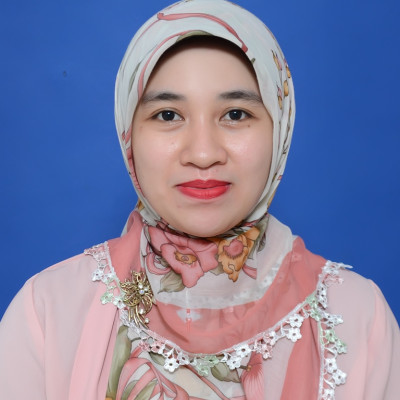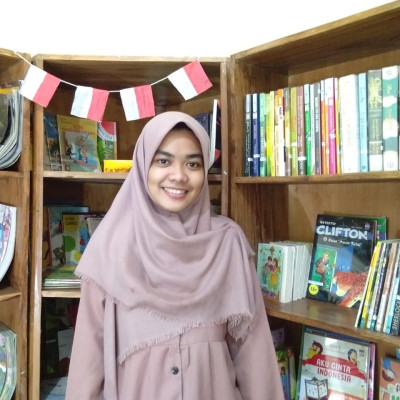Sessions / Location Name: Catur
Physical Location
Location: (2)
Building: Aston Hotel < Aston Denpasar Hotel & Convention Center
Beyond engagement: Multimodal responses to students' reading experiences #3803
Studies found that multimodal texts are more attractive to students and have been helpful in engaging reluctant readers (Serafini, 2012; Thompson & McIlnay, 2019). For regular texts to receive similar reactions from less engaged readers, multimodal responses as during- or post-reading activities may need to be introduced. This presentation reports the experience of a group of English department students in adapting some self-made reading materials like poems and short stories produced by other students into other modes such as short movies, audiobooks, and video books. The adaptation process took place in four months under a project called EDAP ( English Department Adaptation Project). Data was collected using ethnographic data collection methods such as observation, in-depth interviews, and students' self-reflection on reading and adapting the texts. The multidimensionality of their experiences was reflected in the level of engagement and in the depth of their comprehension of the reading materials.
Where can you find COVID, Ukraine, BTS and chatty mushrooms? #3678
In this talk, the presenters will discuss Xreading News. This is an exciting feature of Xreading launched in April 2022. Xreading News offers real news stories each week achieving two main goals; 1- to expose students to current affairs, and 2- to expose students to more English. Five news stories from around the world, from a wide range of fields, such as Science, Technology, the Environment, and World News, are produced in graded language and uploaded to Xreading every Sunday. But how do writers select their stories? Why are some stories more suitable for Xreading News than others? Why are Ukraine and chatty mushrooms suitable and Roe Vs Wade is not? The presenters will talk about their experiences choosing, writing, and leveling real news stories. We will also look at the changes made from an original submission to a published entry and discuss why the editing decisions were made.
Building an ER booklist to meet different needs of Chinese students #3812
There are two major kinds of paths to learn English in China: acquisition and learning for exams. The students who learn English through acquisition normally start before they are three years old and follow similar paths with US kids, using leveled readers, bedtime stories, and songs. By the age of eight, many of them are able to read authentic teenage-level books, but it doesn't necessarily mean they can get a high score on English exams at school. So, we might ask what should they do? Other students follow the school textbook system and can pass the exams, but they can't read the books, and don't enjoy reading. Thus, we might wonder if there are any materials for them to start reading. From beginners to higher intermediate levels, we divide the reading level into 5 stages based on headwords level of the ERF form. This presentation will give some suggestions about books for each stage for these two kinds of students.
Four-year investigation of extensive reading with restriction #3806
In terms of implementing extensive reading (ER), instructors often let students choose what they want to read. Thus, instructors do not exercise any control over the difficulty level of students’ reading materials. The present study is a four-year investigation of ER with restriction, which attempts to address this issue by setting restrictions on students’ choice of reading materials. 206 third-year Japanese university students participated in this study. The first group (free-reading group) was permitted to read books of any length, whereas the second group (restricted-reading group) had to choose books of at least 1,000 words in length. The findings revealed that both groups read a similar number of books over the same period of time. However, the restricted-reading group read more words than the free-reading group because the restricted-reading group had to choose books of at least 1,000 words in length. Requiring students to read longer books might encourage them to read more and thus reach their reading goal more easily.
Developing bilingual digital reading material with local context theme #3779
This presentation focuses on the current findings of an ongoing case study conducted with an in-service teacher in East Kalimantan, Indonesia, concerning the challenges of developing bilingual digital reading materials with a local context theme for young learners. This study closely observed a teacher as she went through intensive training for developing digital reading materials. Afterward, a series of in-depth interviews were conducted to investigate the difficulties encountered by the teacher during the materials development process. The findings revealed that the teacher found it difficult to choose a digital platform that was simple to use while also providing adequate interactivity to facilitate the intended reading activities. The other difficulty was finding a topic that was both interesting and relevant to the curriculum in the local context. These findings highlight the importance of proper training in the development of digital reading materials and how to use them in ER contexts.
Implementing ER for vocational high school students through literacy cloud #3773
Literacy Cloud is a free digital storybook that can be used by teachers to engage learners in developing skills and habits of reading. This presentation examines the implementation of extensive reading (ER) using Literacy Cloud as mobile English learning and their perceptions of this implementation. Forty-five EFL students in 3rd-grade vocational high schools participated in this study. They had no experience in ER and did not have experience using Literacy Cloud before, so Literacy Cloud was introduced to support the ER program. Then, questionnaires and interviews were given to find out their experiences using Literacy Cloud in the ER class. The results showed that they have positive attitudes and perceptions about Literacy Cloud, and they revealed that it was very useful for supporting their English skills, especially reading skills. This study suggests that English teachers should consider ER to be implemented in language learning, it is advisable to integrate it with technologies such as Literacy Cloud because it provides many benefits for the development of students' reading skills.
The multidimensional effects of extensive listening on EFL learners #3798
This study investigated the multidimensional effects of extensive listening (EL) on learners’ language gains, selection of study materials, practice styles, and their perceived effectiveness of EL. Fifty-five university students took part in a four-month EL experiment. Each week students kept a listening log recording what materials they selected, how they practiced, and how much time they practiced. Students also reported the content they practiced to their instructor at the weekly meeting. Language gains were measured through a pre-test and a post-test on students’ aural vocabulary test (Listening Vocabulary Levels Test, LVLT) and general listening comprehension (TOEIC). The perceived effectiveness of EL was collected through a 32-item questionnaire. Overall, students made significant improvements on their aural vocabulary knowledge and listening comprehension, which were consistent with their perceived effectiveness of EL. The questionnaire results revealed that most students liked and were able to select their study materials that suited their language levels and interests. In addition, EL was found to be a very individual activity because many students were reluctant to share or discuss with their friends about what they had practiced. Their practice style was mainly a combination listening plus viewing. Some issues encountered in the implementation of EL were discussed and suggestions were made.
A story of two classes: Adapting the new ER textbook Links for ‘retakers’ #3671
"Links" is a new four skills textbook with a built-in ER component through Xreading. This presentation compares the experience of students and teacher in the implementation of Links in two classroom settings: An intact class of mainstream students and a class of so-called ‘retaker’ students who have failed the course at least once before. Classes of retakers often require special considerations because of their previous negative learning experiences in English classes in particular and or anxieties in educational settings in general. Thus, retaker and mainstream classes will be compared qualitatively on affective and motivational measures, such as willingness to complete extensive reading and attitudes toward extensive reading, as well as quantitatively on performance measures, such as amount of reading and reading speed. Finally, I will present observations, successes, and challenges of adapting Links to each of the classes from an instructor’s perspective.
Superhero comic books supporting language, literacy and environmental goals #3878
BASAbali supports local Indonesian languages, cultures and civic engagement by encouraging people to publicly discuss key issues using local languages on community-developed online platforms. In relation to reading, the Superhero series is modeled after traditional Indonesian shadow puppet storytellers and co-developed with the community and local artists. Digital superhero Luh Ayu Manik Mas engages youth to take action to advance sustainable development goals. The books offer language literacy, environmental and cultural literacy to children in an enjoyable way. This presentation will introduce the organization and its various activities, focusing on those that aim to promote language, environmental and cultural literacy. She will discuss the development of the superhero series, its successes and future plans. All ERWC6 participants will receive a copy of one comic book when they pick up their nametags on site.
First steps in story writing #3734
Are you interested in writing stories for your students? This workshop will take you through the first steps in writing your very own story. The aim of this workshop will be to address questions such as, how do you get the inspiration for a story? How should a story be structured? What do I have to do to make the story interesting for my students and other readers? How do I maintain a certain language level? At the end of the session each participant will come out with a plan for their story.
Exploring plot structure through reading and writing in class #3718
The aim of extensive reading is to enable students to read fiction and non-fiction more efficiently. Non-fiction texts, such as biographies, instruction manuals, news reports, advertising, etc., follow the same basic structure as works of fiction. Why is this? Cognitive scientists have demonstrated that the human brain comprehends, analyzes, memorizes, learns, and teaches others through stories. This process of story creation and sharing is as much a part of our human nature as language and walking on two feet. Although we all have this natural ability to follow, retell, and create stories in our first language, when processing language stories through a second or third language we may find it harder to follow the narrative plot. This presentation introduces a series of activities to help students identify the stages of the plot of books they have read and then to consolidate their understanding through creating their own stories collectively.
Students authoring online multilingual graded readers #3744
Semi-secret societies like the Tolkien and Lewis’ literary discussion group ‘The Inklings,' where authors share their imaginative journeys, have the potential to engage learners at some of the highest levels on Bloom’s Taxonomy - and meld the strengths of a learner in their L1 with the possibility of collaborating with learners from other language backgrounds to create graded readers for multiple audiences. StudioCLA.org is a group of ‘Community Literacy Activist’ students who create, translate, and simplify readers in English and Japanese. The creation, translation and simplification follow an organic process that involves the design of the story elements, vocabulary level, word count, and target audience. The first volume of these stories - YAMS - or Young Adult Multicultural Stories, consists of six stories each in both English and Japanese and each at three levels. This presentation will describe the evolution of StudioCLA from a grant-initiated project (JSPS 20K13154), and invite your participation in an international society of human creative writers of language learner literature in multiple languages that aims to ‘change the world through the power of art’.
Are good readers good writers too? #3857
Students who read a great deal become better and more confident readers. But the effect of reading on students’ writing is less clear: students who are good readers continue to find writing challenging. In my presentation, I will first discuss the nature of the relationship between reading and writing and then explore how this relationship can be strengthened. I will then offer practical tips on how teachers can help students benefit from more focused reading, i.e., the kind of reading that enables students to notice language features and discourse rules found in texts. When students do this regularly, there is a good chance that they might become better readers and writers.
The Design of an ER program applying gamification for Korean young learners #3771
This study explores the design of a gamified extensive reading (ER) program to improve English reading accuracy and fluency in elementary learners within an English as a foreign language (EFL) context. Recognizing that traditional ER programs may not cater to the short attention spans of primary students, the researchers propose using gamification, a technique that integrates game elements into non-game contexts (Deterding et al., 2011), to create engaging and meaningful language learning experiences. The gamified ER program includes game mechanics such as challenges, levels, points, leaderboards, and missions to emphasize intrinsic motivation. The study demonstrates the program's effectiveness through student surveys and teacher observation journals, highlighting increased student immersion, reading accuracy, and fluency. The gamified ER design can be adapted for various age groups and reading levels and can be used in close reading classes. The researchers will also provide a checklist and resources for implementing the program.
Authentic projects to increase student motivation and autonomy in ER class #3842
Adolescence is a phase where rapid physical growth with intense hormonal activity takes place. It may lead to diminishing energy to concentrate in academic works. Therefore, even though structured academic learning is difficult to overcome, collaborative works and peer-interaction which enable them to explore their future-role in the society are of their interest. On the other hand, extensive reading activities tend to be individual which are not in line with adolescence’s characteristics. Thus, we conducted authentic projects to bridge it. The project was conducted in a private junior high school in Yogyakarta. A group of 15 middle-grade students aged 12-15 years old participated for 7 months duration. They’ve performed several group-chosen authentic projects, such as: book-procurement, performance, and social-media project. This presentation would also discuss about the success, obstacles, achievement, student’s point of view, and our analysis on its effectiveness. The data are collected and analyzed qualitatively.
Writing for EFL success – A Novel process #3672
To increase student motivation with regard to both Extensive Reading and Creative Writing, a graded reader writing competition was organized. Over the course of a semester, twelve student writers, under the guidance of their teacher completed novels, as well as cover designs and quizzes. Those graded readers, were then made available on the Xreading website so they could be read and rated by students around the world as well as a panel of volunteer judges. The presenters will discuss the process that was used, share samples, and ideas for expansion in the future.
Boosting extensive listening: students' voices #3677
The article investigates the experiences and perspectives of students in relation to extensive listening, a technique used to enhance listening skills. The study is based on qualitative research methods, including interviews and focus group discussions with a diverse group of students from higher education institutions. The study aims to understand the effectiveness of extensive listening in improving students' listening skills, and how students perceive and approach extensive listening activities. The article explores the factors that influence students' attitudes towards extensive listening, such as their motivation, prior listening experiences, and the relevance of the listening material. The findings of the study reveal the benefits of extensive listening, including its impact on students' listening skills, motivation, and overall language proficiency. The study also highlights some of the challenges that students face in implementing extensive listening activities, such as finding appropriate listening material and managing time. The article concludes by emphasizing the importance of taking into account students' perspectives and experiences in designing extensive listening activities and promoting this technique as an effective method for improving listening skills in higher education institutions.
Using extensive listening content as free, fun, and effective ER materials #3868
This session will show how materials for EL can supplement and even substitute as materials for ER, and how the two approaches work well together. The main aim of ER is to provide engaging reading materials that increase student exposure to comprehensible input. Left out of the equation is the importance of EL and how it can work just as effectively as ER because most naturally spoken language is simple in terms of both grammar and vocabulary, making it suitable as graded content that is easy to read. This presentation will look at the power of extemporaneous speech and how naturally spoken transcripts can lead to engaging content that is mobile friendly, multimodal, interesting, free to access and in abundance. The presentation will also look at how technological limitations in the past led to EL being overlooked, and how those limitations no longer exist.
A textbook for Extensive Reading: A novel solution #3674
Many language teachers want to make Extensive Reading a part of their classes with the knowledge that it will benefit their students’ language development. However, due to the curricular and textbook requirements of some institutions, it can be difficult to implement extensive reading into a general English course. This presentation describes the development of a four-skills, oral communication coursebook seamlessly integrating an ER program through Xreading.com. The book is designed with a task-based approach and features engaging and relevant topics for learners.
Mini-bibliobattle in an extensive reading course #3830
In this workshop, the presenters introduce Mini-Bibliobattle, a simplified variation of Bibliobattle. Bibliobattle refers to a social book presentation game where presenters introduce their favorite book for five minutes, followed by a three-minute Q&A session, and votes select the Champion Book from participants. This game has been spreading in Japan since it was developed in 2007, and teachers started using it in a language classroom. We will demonstrate the game at the site and provide some tips to instruct in combination with extensive reading. Students' perceptions of the game from our practices will also be provided.
Extensive reading in adulthood: transforming learners' mindsets #3865
Learning English in Japan has long been closely associated with preparations for university entrance exams. Believing rote learning to be the best and shortest way to obtain good exam scores, English teachers in Japan tend to encourage students to focus on memorization through repetition. Consequently, students who have difficulty with rote memorization may develop negative feelings towards English language learning during their secondary school education. The presenter designed a three-month online extensive reading course for adult English learners aimed at mitigating their anxiety regarding English as well as supporting them to be confident readers. The structure of and the principles behind the course design will be presented. Based on collected learner feedback, rigid mindsets, such as seeking the ‘correct’ reading comprehension, transformed into more relaxed attitudes toward English through, most notably, their shared reading experience with other course participants.



























